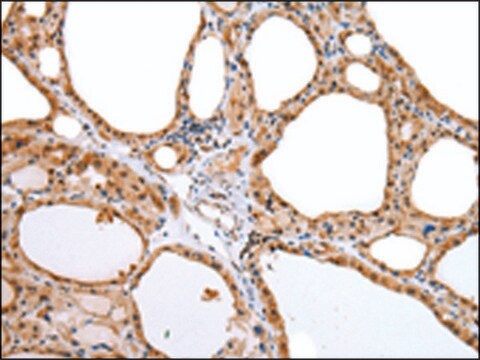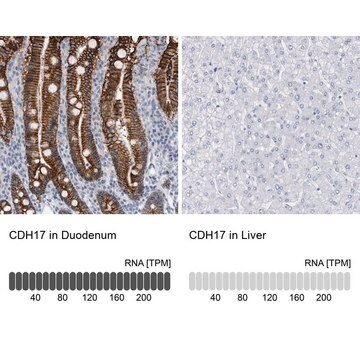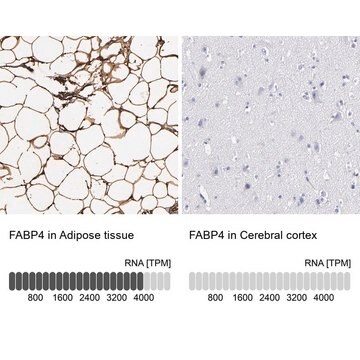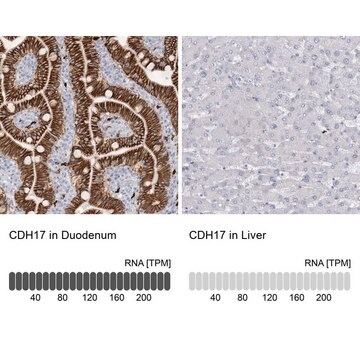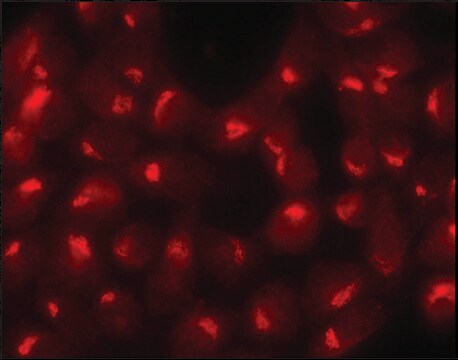ABS1677
Anti-V-ATPase subunit d 2
from rabbit
Synonyme(s) :
V-type proton ATPase subunit d 2, Osteoclast-specific vacuolar ATP synthase, V-ATPase subunit d 2, Vacuolar proton pump subunit d 2
About This Item
Produits recommandés
Source biologique
rabbit
Niveau de qualité
Forme d'anticorps
unpurified
Type de produit anticorps
primary antibodies
Clone
polyclonal
Espèces réactives
mouse
Réactivité de l'espèce (prédite par homologie)
nonhuman primates (based on 100% sequence homology), rat (based on 100% sequence homology), human (based on 100% sequence homology)
Technique(s)
western blot: suitable
Numéro d'accès NCBI
Numéro d'accès UniProt
Conditions d'expédition
ambient
Modification post-traductionnelle de la cible
unmodified
Informations sur le gène
mouse ... Atp6V0D2(242341)
Description générale
Spécificité
Immunogène
Application
Signaling
Western Blotting Analysis: A representative lot detected less V-ATPase subunit d 2 expression in osteoclasts differentiated in culture from GSK3 -S9A Tg mouse bone marrow monocyte precursors (BMMs) due to a downregulated NFATc1 expression caused by osteoclast-specific GSK3 -S9A mutant expression (Jang, H.D., et a1. (2011). J. Biol. Chem. 286(45):39043-39050).
Western Blotting Analysis: A representative lot detected V-ATPase subunit d 2 in osteoclasts, but not bone marrow monocyte precursors (BMMs), from wild-type mice, nor in osteoclasts from Atp6v0d2-knock mice (Lee, S.H., et al. (2006). Nat. Med. 12(12):1403-1409).
Qualité
Western Blotting Analysis: A 1:2,000 dilution of this antibody detected V-ATPase subunit d 2 in mouse osteoclast lysate.
Description de la cible
Forme physique
Stockage et stabilité
Handling Recommendations: Upon receipt and prior to removing the cap, centrifuge the vial and gently mix the solution. Aliquot into microcentrifuge tubes and store at -20°C. Avoid repeated freeze/thaw cycles, which may damage IgG and affect product performance.
Autres remarques
Clause de non-responsabilité
Not finding the right product?
Try our Outil de sélection de produits.
Code de la classe de stockage
12 - Non Combustible Liquids
Classe de danger pour l'eau (WGK)
WGK 1
Point d'éclair (°F)
Not applicable
Point d'éclair (°C)
Not applicable
Certificats d'analyse (COA)
Recherchez un Certificats d'analyse (COA) en saisissant le numéro de lot du produit. Les numéros de lot figurent sur l'étiquette du produit après les mots "Lot" ou "Batch".
Déjà en possession de ce produit ?
Retrouvez la documentation relative aux produits que vous avez récemment achetés dans la Bibliothèque de documents.
Notre équipe de scientifiques dispose d'une expérience dans tous les secteurs de la recherche, notamment en sciences de la vie, science des matériaux, synthèse chimique, chromatographie, analyse et dans de nombreux autres domaines..
Contacter notre Service technique